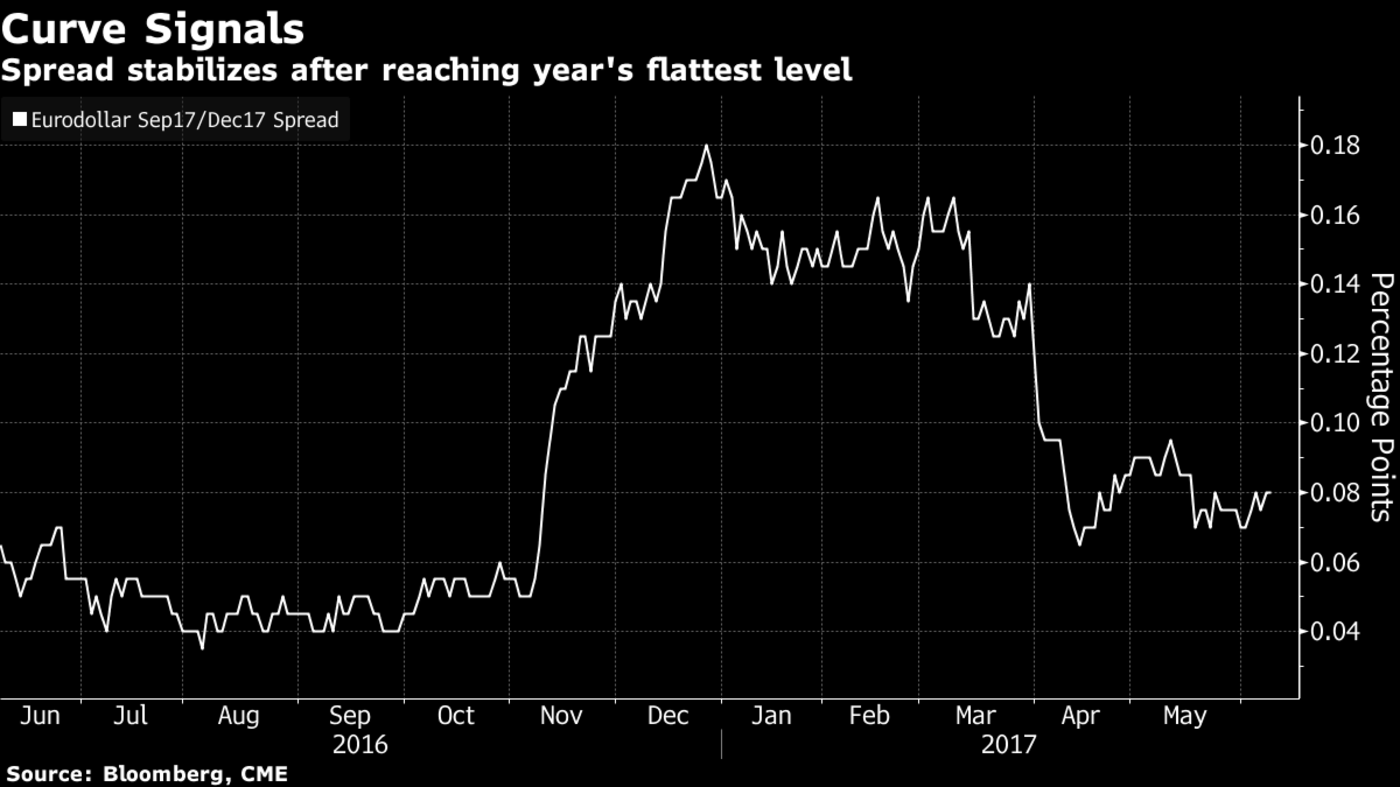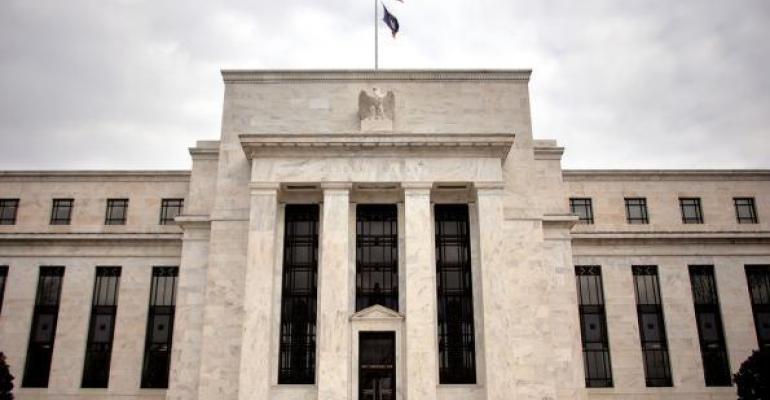By Alexandra Harris and Edward Bolingbroke
(Bloomberg) --The traders with the most at stake from the Federal Reserve’s policy decisions see a rate hike next week as practically a lock, and they’ve started to put their money on a followup boost in December.
With the dust settling after Thursday’s U.K. elections, the Fed’s June 14 decision is the next focal point for investors. And in eurodollar futures -- where traders place bets and hedges tied to the path of central-bank policy -- confidence is building that after Wednesday, officials pause in September and resume raising borrowing costs at year-end.

Positioning in the market for short-term interest rates started to shift toward December after disappointing U.S. jobs data June 2. The figures also prompted Goldman Sachs Group Inc. to push back expectations of a third 2017 increase to December, leaving room for the Fed to unveil plans in September for shrinking its balance sheet. In eurodollar futures that morning, it was the second-busiest day on record for bets on the relationship between the September and December contracts.
With the market seeing less than a 50 percent chance of a third rate increase by year-end, “a lot of people are thinking that’s low because the Fed is in play and the chances should be higher,” said Todd Colvin, senior vice president at futures and options broker Ambrosino Brothers in Chicago. Given the low cost of wagering on a September pause and December hike, “what are you really risking?”
In the eurodollar futures market, which has a notional value of about $14 trillion, shifting views on the second half of 2017 can be seen in the fluctuating spread between September and December contracts.
The gap shriveled this year as traders speculated the Fed would be less aggressive in raising rates, partly amid fading prospects that Congress would pass fiscal stimulus. The spread dwindled to about six basis points in April, from a peak of 18 basis points in December reached after policy makers lifted borrowing costs and projected three hikes for both 2017 and 2018.
In recent weeks, the spread has stabilized and started to edge higher as traders braced for the Fed to follow through on its projected third 2017 hike, while also announcing plans to shrink its bond holdings.

In the hours after the weaker-than-forecast May jobs report, sentiment coalesced around policy makers delaying that third tightening until their final meeting of 2017.
Traders bought September contracts while selling December tenors, a trade that benefits from the spread steepening, according to traders in London and New York. Investors purchased roughly 70,000 of these wagers in a five-minute span on June 2 shortly after 10 a.m. New York time, more than half of the 104,000 traded all day, according to CME Group Inc. data and the traders, who requested anonymity because they’re not authorized to speak publicly. The spread has hovered at about 8 basis points in the past week.
Similar sentiment is reflected in fed fund futures, which show about a 46 percent chance of a 2017 hike after the June meeting.
For traders who have put their money on December and bet on the eurodollar curve steepening, the Fed’s Wednesday decision carries risk. They’ll be on high alert for any sign out of the Fed’s policy statement or Chair Janet Yellen’s press conference that officials may be leaning toward a delay in normalization plans.
“Right now the trade of most pain is a flatter curve,” Colvin said.
To contact the reporters on this story: Alexandra Harris in New York at [email protected] ;Edward Bolingbroke in New York at [email protected] To contact the editors responsible for this story: Boris Korby at [email protected] Mark Tannenbaum, Dave Liedtka

